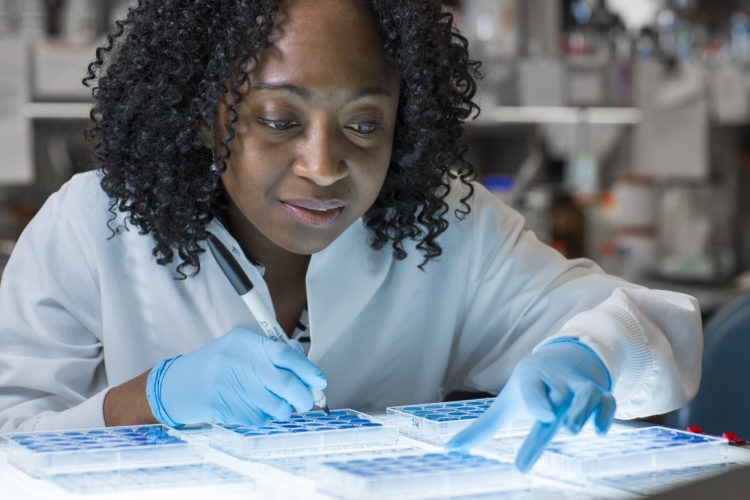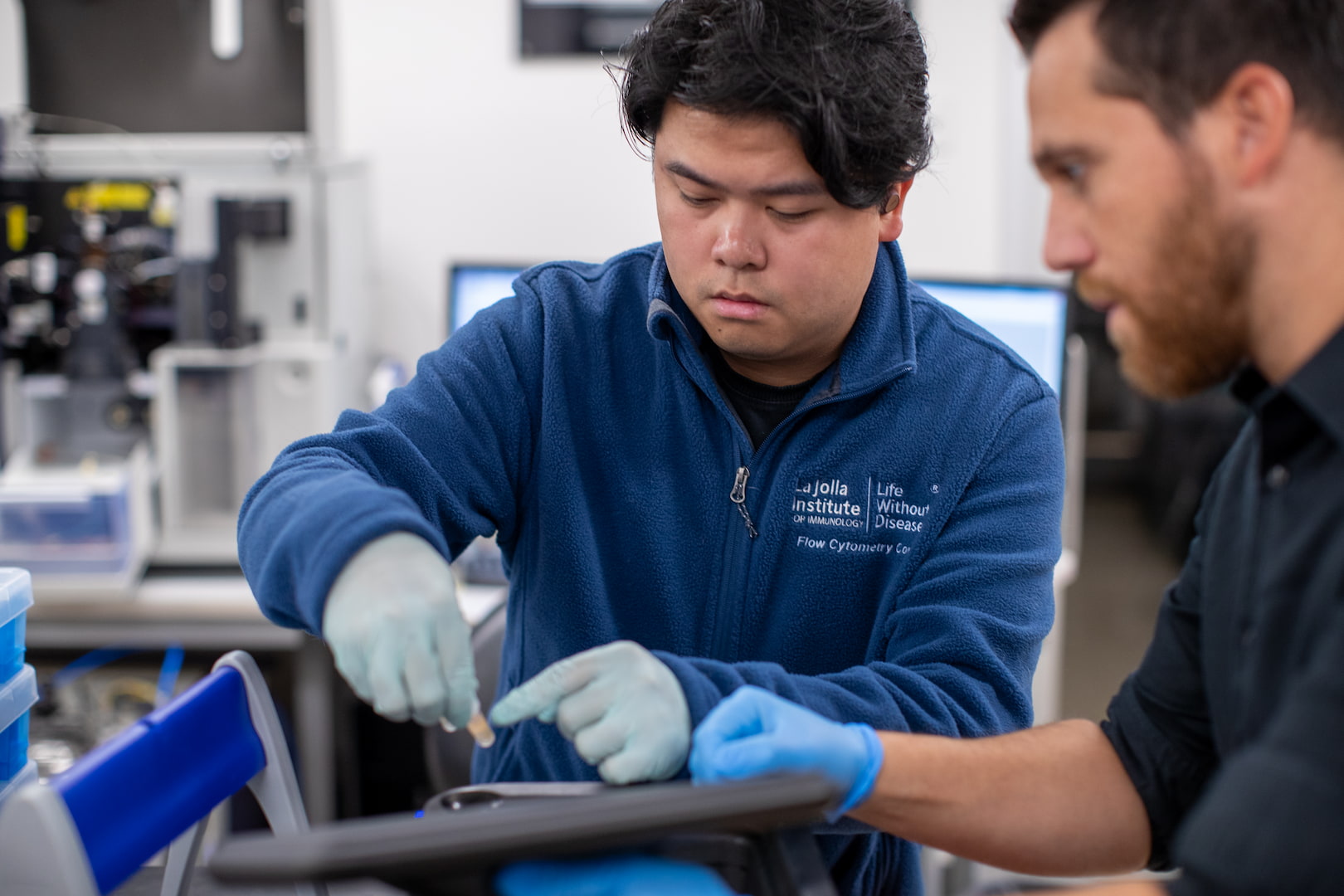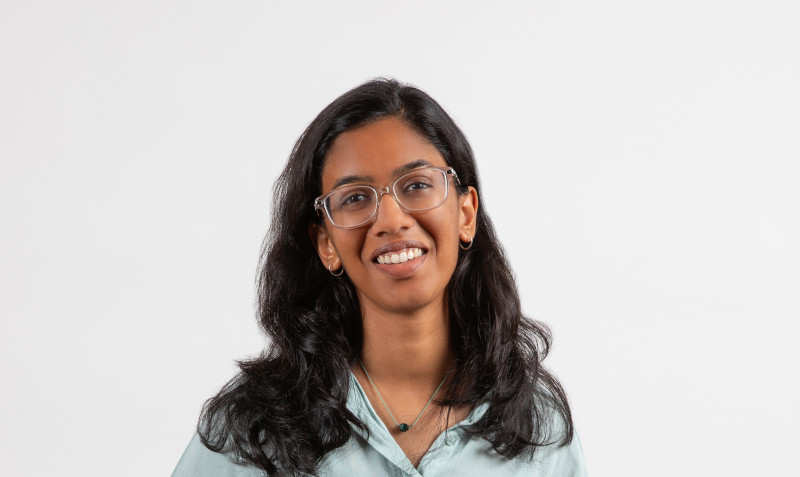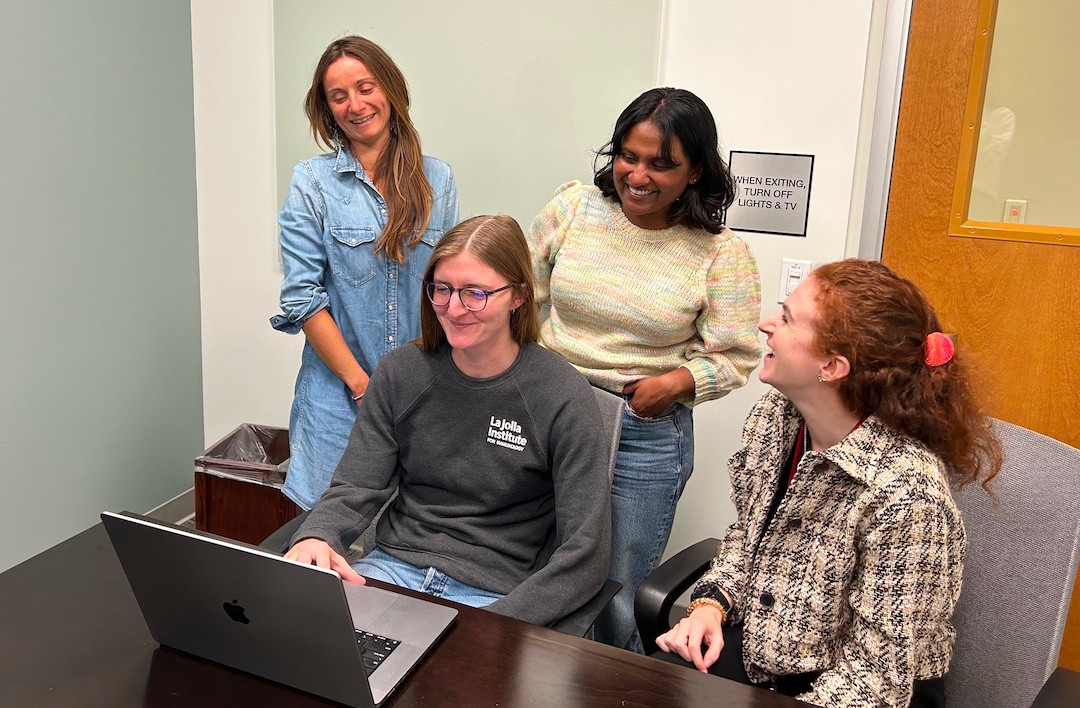Marie Curie, the first scientist to win two Nobel Prizes (1903, 1911), was unquestionably one of the most brilliant scientific minds in history, but in one sense—and through no fault of her own—her outsize career was an inspirational failure: It would take nearly a century for significant numbers of women to come even anywhere close to the French physicist in terms of scientific achievement and recognition.
There are a number of reasons why Madame Curie’s career did not inspire a generation of women to follow her down a scientific path, with lack of education, opportunity, and gender bias among the key limiting factors. The good news is that in 2016, with burgeoning numbers entering the “STEM” fields, women have a firm and rapidly expanding place in science and are taking their seats at the pinnacles of scientific achievement alongside their male counterparts in ever greater numbers.

This trend is clearly manifested at La Jolla Institute. Some of the most amazing immunological research in the world—everything from creating potential new vaccines against the scourge of global infectious disease, to developing lasting cures for some types of cancer, to unraveling the mysteries of the immune system to create powerful new weapons to battle many types of inflammatory diseases—is being conducted by the remarkable group of women scientists at the Institute.
Whether they’re senior professors with worldwide reputations, postdocs, students, technicians, or core directors, the dedicated women at LJI are all deeply committed to producing groundbreaking discoveries that will ultimately translate into clinical treatments to improve and save lives in all corners of the planet.
52.4%
share of Ph.D.s in life sciences awarded to women in 2012*
48.5%
share of female life scientists in 2013*
22.4%
share of female full professors at research institutions 2013*
*National Science Foundation, National Center for Science and Engineering Statistics. 2015.
“One of the most exciting developments in recent years is watching the growth both in numbers and scientific results of the Institute’s women scientists,” says Mitchell Kronenberg, Ph.D., President and Chief Scientific Officer. “When I became president in 2003, we had just one female faculty member. Today, there are five women among our two dozen PIs, 30 percent of the faculty recruited during that time are women, and the percentage of female postdocs and instructors has expanded to 47 percent.
“We’re proud that our ongoing focus on increasing the number of women scientists has been accompanied by an equally important effort to create a research environment that is as bias-free and as supportive as possible, not only regarding gender of course, but extending more broadly,” Kronenberg adds.
“I believe female scientists do feel appreciated and treated equally here and are able to do their best work. The proof of that is that our women scientists have come to represent such a potent force for scientific excellence, and their contribution to the Institute’s strength and success cannot be overstated.”
What’s almost as amazing as the research success of the Institute’s women scientists is they achieved it by overcoming challenges most male scientists have never faced. Among them: gender bias making it more difficult to obtain grants, jobs, and promotions; unequal compensation; being shut out of male-dominated networking crucial for career advancement; and in some cases, being penalized for bearing children and raising a family.
Remarkably, for most of the Institute’s women scientists, these challenges have barely slowed them down. In fact, these obstacles have only served to make them stronger.
Overcoming barriers
“I’ve had to deal with a lot of barriers as a woman over my 20 years in science, but they not only didn’t keep me down, they just fueled my fire to demonstrate that my work and career are equal to that of male scientists,” says Professor Lynn Hedrick, Ph.D., one of the Institute’s brightest stars.
Dr. Hedrick late last year published a paper in Science with one of her postdocs, Richard Hanna, Ph.D., outlining fascinating research that could lead to the use of monocyte therapy to treat and possibly cure metastatic lung cancer. Dr. Hedrick says she’s pleased to report that conditions and opportunities for women scientists have improved greatly, and she’s optimistic that 20 years in the future most of the obstacles faced by female researchers today will be gone for good, resulting in an equal playing field. But since she believes multiple challenges remain, she’s actively working on behalf of women on a number of fronts, including serving on a committee on the status of women in science for the American Association of Immunologists.
“Things are certainly better, but it’s important to raise awareness that we still have a ways to go,” Dr. Hedrick says. “I’ll give you an example. A national study conducted a couple of years ago provided identical CVs to academic and corporate recruiters. One CV had a man’s name at the top and the other identical CV had a woman’s name. When asked which person they would hire or promote, 75 percent of the respondents chose the man. What this example shows is that even though it’s 2016, there are still serious gender discrimination issues that must be addressed if women scientists are to achieve full equality with their male counterparts.”
Interestingly, there are some women who do not believe that being a female scientist presents any problem at all. They claim they have never been discriminated against in their careers and that just raising the issue indicates gender actually matters. Some even say being a woman can be an advantage in pursuing grants and positions where there may be preferences for hiring women to compensate for past discrimination.
There’s a certain amount of denial and wishful thinking in those concepts, says Sonia Sharma, Ph.D., Assistant Professor in the Division of Cell Biology, and Director of the Functional Genomics Facility. Dr. Sharma, who is one of the Institute’s youngest principal investigators, has already shown her mettle. Last year, Dr. Sharma was awarded a five-year $1.1 million grant from the National Cancer Institute to study how the body’s innate immune system recognizes and is stimulated by DNA released by damaged or dying tumor cells.
“It’s not whether challenges exist for women in science, because they certainly do, but it’s how we respond to those challenges; how we mitigate them; how we rise above them, and ultimately how we serve as mentors for the next generation of female scientists,” Dr. Sharma says, adding that she’s observed issues related to male-centric networking in science. “During my graduate studies I made observations related to our lab’s research that should have led to significant networking opportunities in the field,” Dr. Sharma recalls. “But although I wanted my supervisor to introduce me to other scientists in the field, I think it always felt more natural for him to promote some of my male co-authors to fellow colleagues and collaborators, which did contribute to some great opportunities that I felt sort of left out of. Looking back, I know I should have spoken up more.”
Far from being resentful, Dr. Sharma, like her colleague Dr. Hedrick, has used experiences like that as motivation. “I think it’s made me work twice as hard, and that has paid off in working to create my own opportunities,” Dr. Sharma says. “I think that the reality of gender issues or bias hasn’t prevented me from continuing to push ahead. There are many different avenues to success, and in the end there should be no barrier that can prevent anyone from going as far as their drive and talent can take them. I do think that one of those avenues is creating networks that are inclusive of other women, that in fact we have a responsibility to help and support each other.”
The importance of mentorship
Assistance from other scientists, especially those with many years of experience, has been a critical factor in the careers of most of the female researchers at the Institute. Associate Professor Sujan Shresta, Ph.D., one of the world’s leading researchers on infectious diseases, including dengue fever, credits several fellow faculty members, including Anjana Rao, Ph.D., for helping her grow as a scientist. As a member of the National Academy of Sciences, Dr. Rao is one of the Institute’s luminaries whose research is revealing how specific genes are regulated and how the TET family of tumor suppressors, discovered in her lab, prevent cancer and autoimmune disease. “Anjana was eager to help and met with me several times,” says Dr. Shresta. “She essentially showed me how to make my project more compelling to reviewers. I’m very grateful to her because the proposal was funded at the beginning of March.”
Dr. Shresta herself is an inspirational figure to younger female colleagues, including those in her native Nepal and other developing countries where female scientists face even greater obstacles in education and advancement. “Diversity is a key driver of academic innovation and creativity,” emphasizes Dr. Shresta. “It will take nothing short of a diverse group of scientists of different ages, ethnic and national origins, genders, and training to tackle the serious diseases that still afflict many of us.”
Dr. Shresta accepts the job of role model enthusiastically, especially in one of the remaining areas challenging women scientists: motherhood. “Even with a supportive partner and helpful colleagues, pregnancies affect a lot of women at a critical time of their career: Usually when they are postdocs in the final stretch to their biggest paper, or as young investigators establishing a brand new lab and starting to work toward tenure,” says Dr. Shresta, mother of two children.
“Academic research is a highly competitive field where you have to work all the time at 110 percent. That’s why a lot of women wait until they’re in their mid-to-late 30s to have children, and some decide to forgo having families altogether. Women shouldn’t be penalized for undertaking something that is so important in their lives and for society in general. Whether it’s helping women to work from home, offering families better child care support, or other types of assistance, such as lactation rooms, we have to address this issue if women are ever going to be able to fully contribute to scientific progress. Ensuring that women can, like men, realize their full potential as scientists is not just a matter of fairness. It’s a necessity that benefits everyone.”
A new generation
Fortunately, that seems to be one of the last remaining issues facing women today, with the overall scientific environment increasingly conducive to providing women with equal opportunity. This has been the experience of some of the Institute’s younger scientists, including Annie Elong Ngono, Ph.D., a postdoc in Dr. Shresta’s lab who was raised in France and Cameroon.

“I think my generation has benefited from the efforts of Dr. Shresta and all of the women who have gone before us,” Dr. Elong Ngono says. “You can see the mentality has changed and things are so much better for women from what it was in years past, especially at places like the La Jolla Institute, where we are all treated fairly and equally. Fortunately, it seems to be changing everywhere and men are becoming champions for women as well. I remember my professor in France for my Ph.D. pushed me and told me all the time that I was a scientist and that I shouldn’t be afraid as a woman to achieve anything I wanted. I felt so lucky to have his support and it’s helped me realize I didn’t have to worry about some of the pressures I felt being a woman in science, that I’m just as capable as everyone else.”
If there is one issue most women scientists believe will be the last barrier to fall, it’s the “glass ceiling” they believe is preventing females from rising to top academic and management positions in greater numbers. It’s a concern for another young scientist, Dari Spasova, a native of Bulgaria and a grad student who will receive her doctorate this summer in the lab of adjunct professor Charles Surh, Ph.D. Spasova is pleased to see statistics showing that women are entering science in equal numbers to men, but having worked in a number of labs across the world, she has seen the problem of advancement first-hand.
“What I’ve seen is that a lot of women start out with a lot of ambition and hope at the postdoc level and in their first jobs, but as time goes by they gradually become discouraged and many of them give up because they run into this glass ceiling where it’s very difficult to advance to become professors and department heads, let alone heads of institutions,” Spasova says.
“I’m actually really optimistic this will begin to change fairly soon as the old guard begins to retire and is replaced by younger men who are more willing to advance women, or are replaced by women themselves. That’s really exciting to think about. I think the best thing we, as women, can do to speed up the process is to work as hard as possible, know that we have the potential to become the best scientists in the world, and never compromise. If we do that, we may not all become Marie Curies, but we will be guaranteed the chance of having amazing careers that I truly believe will result in some of the most important scientific achievements in history.”


